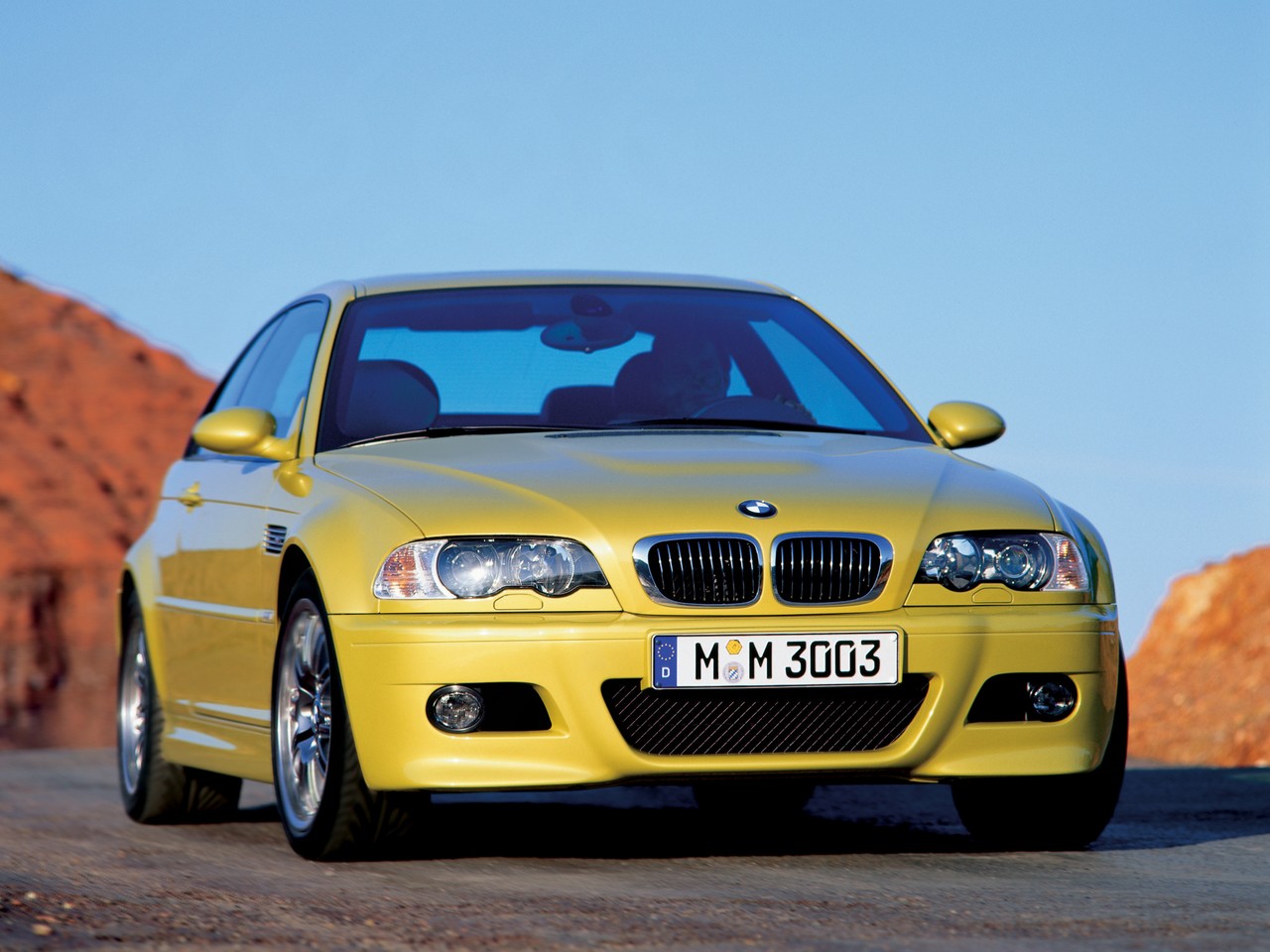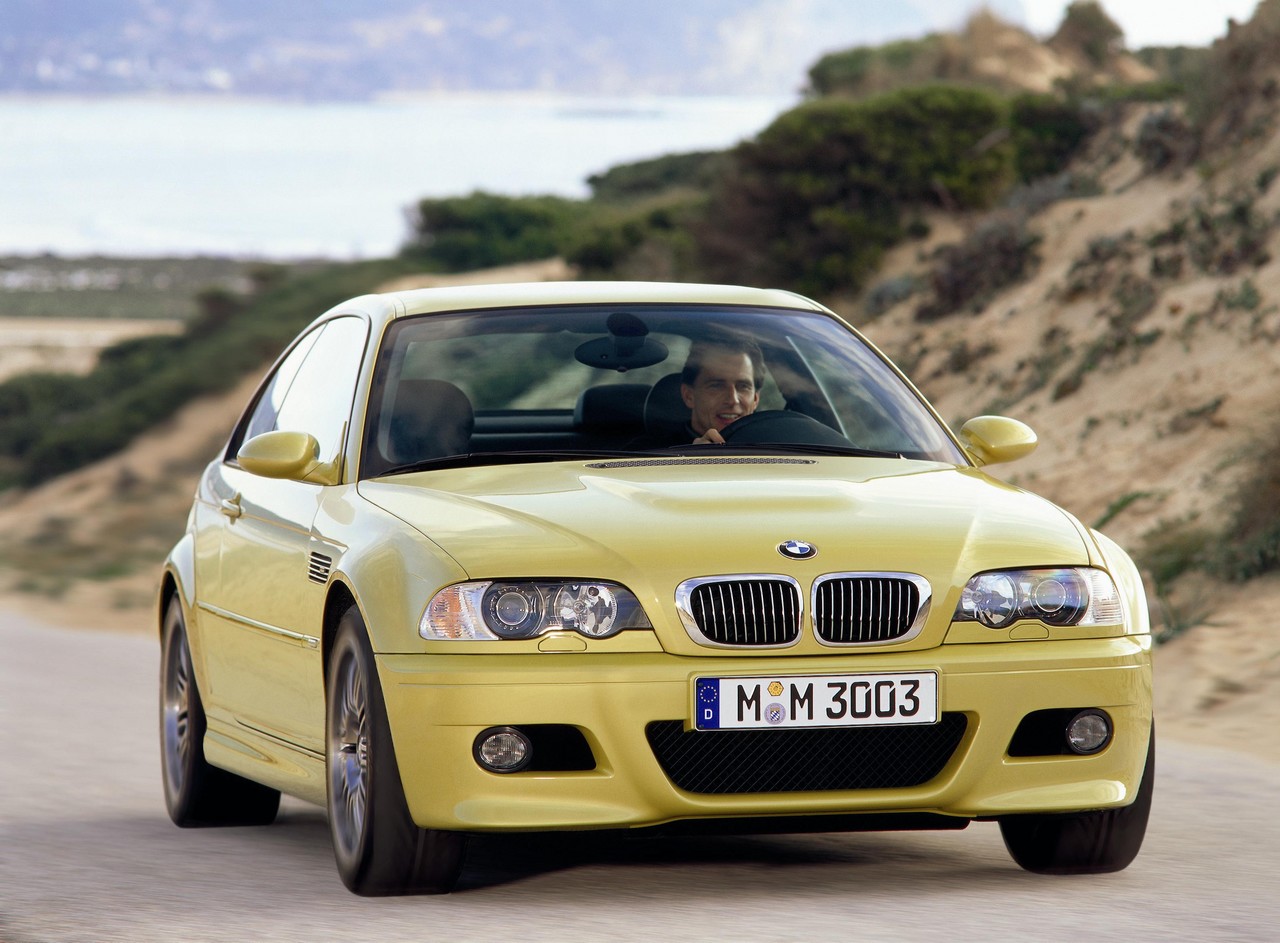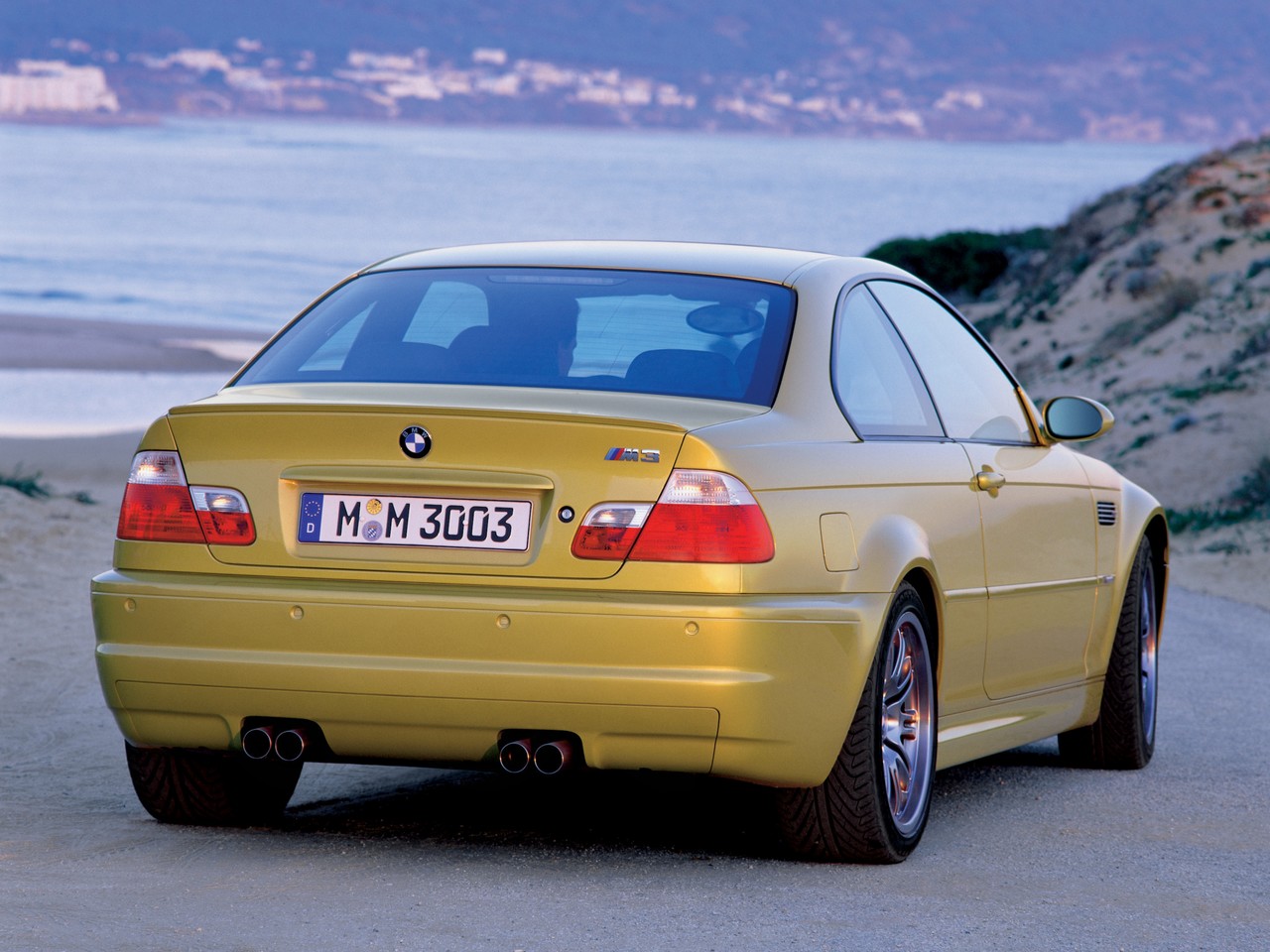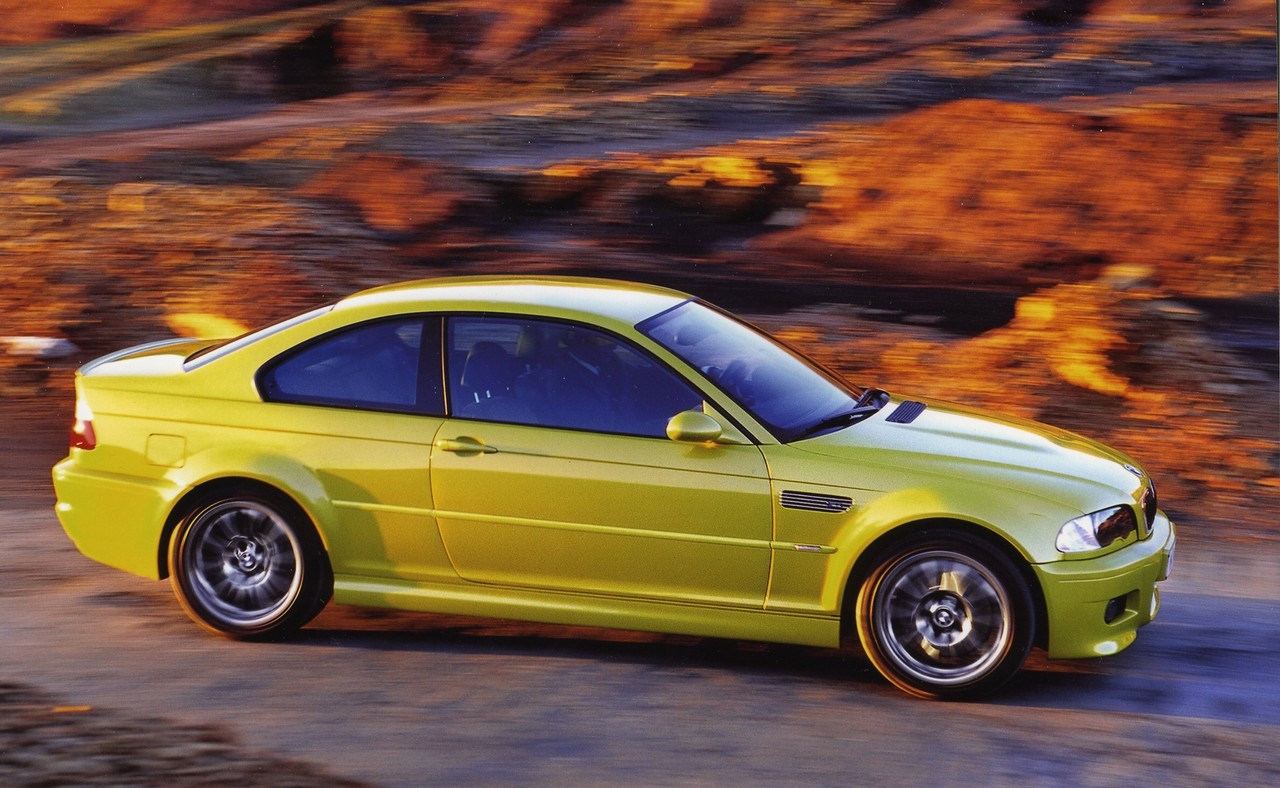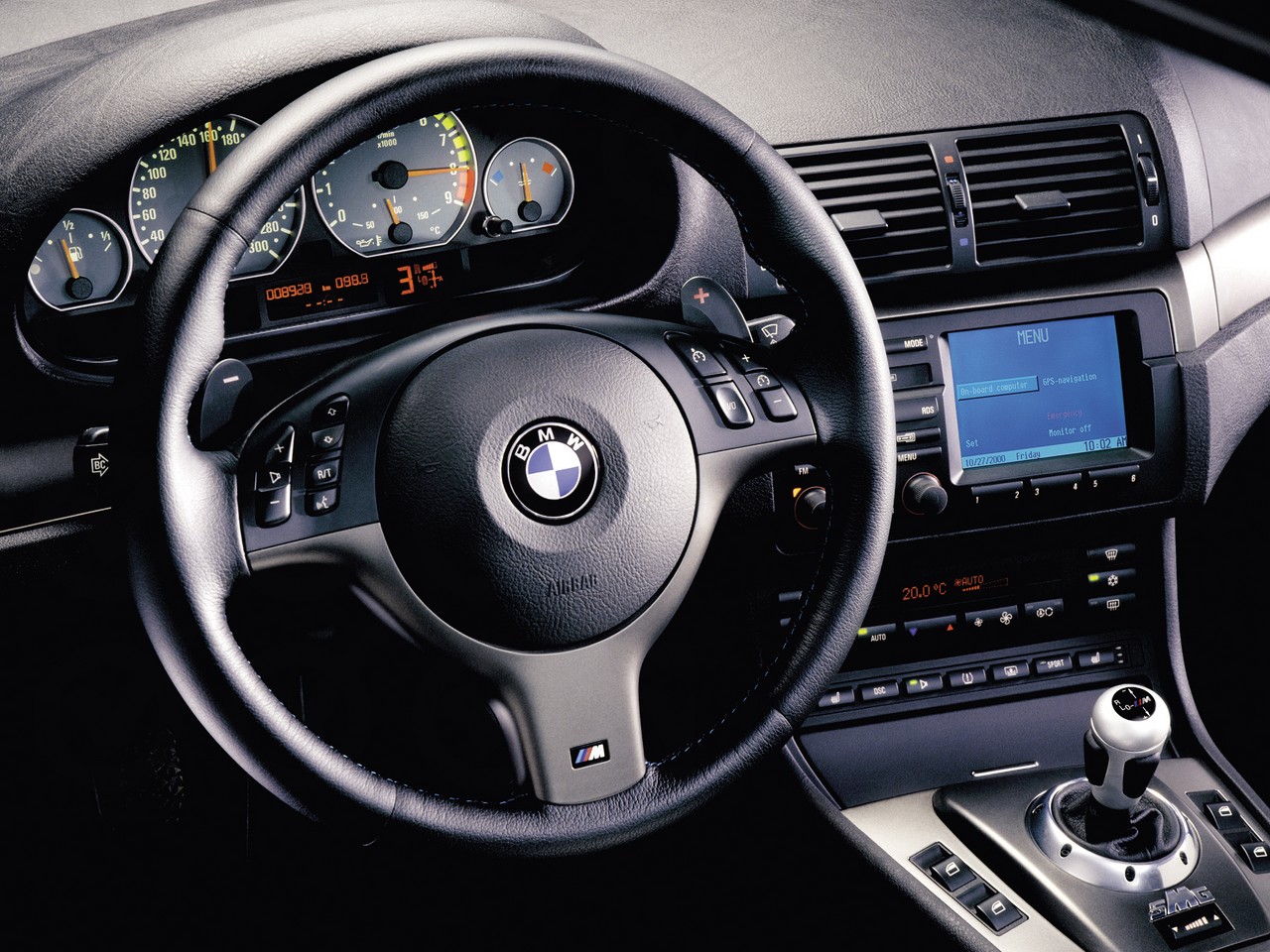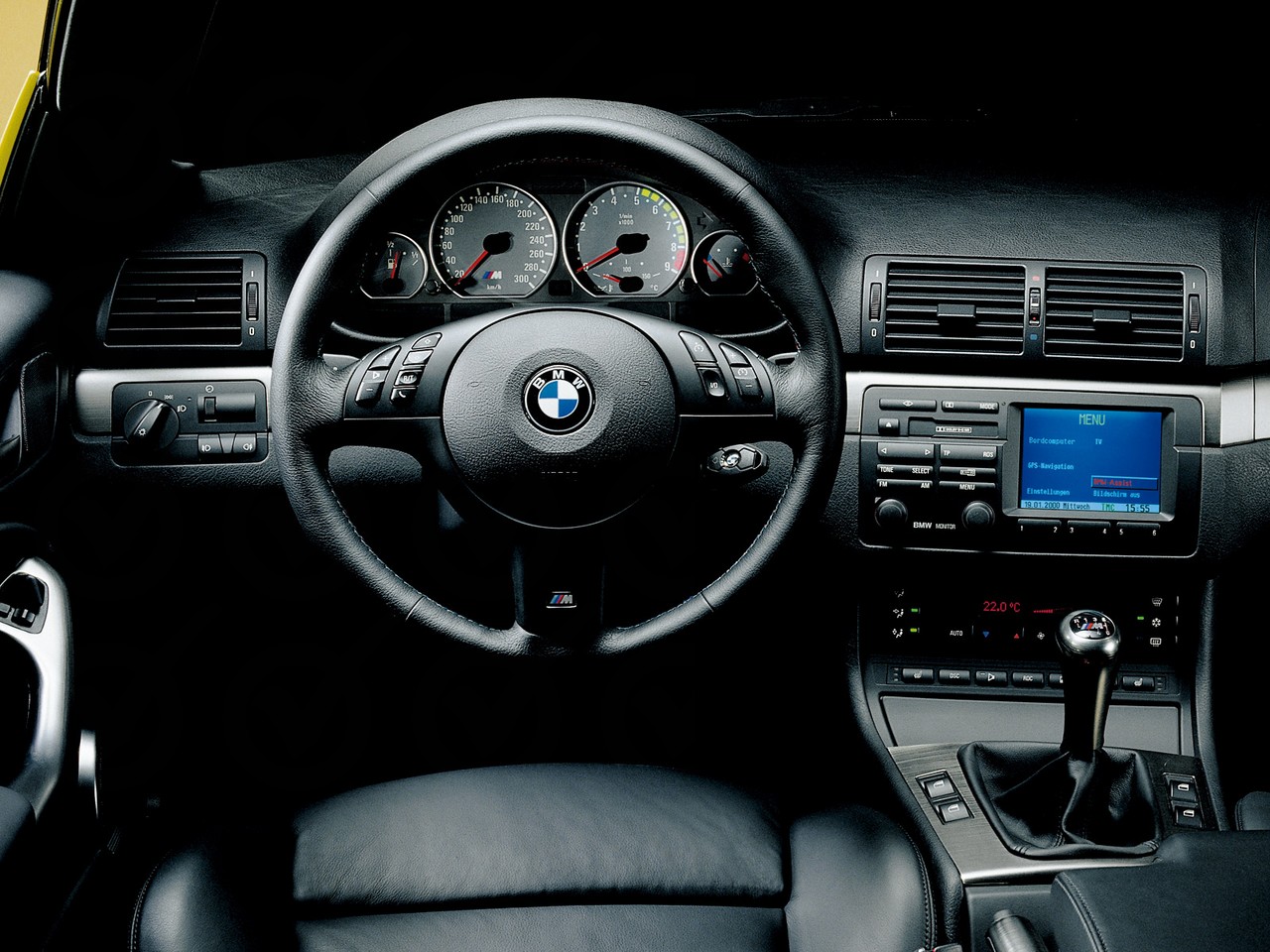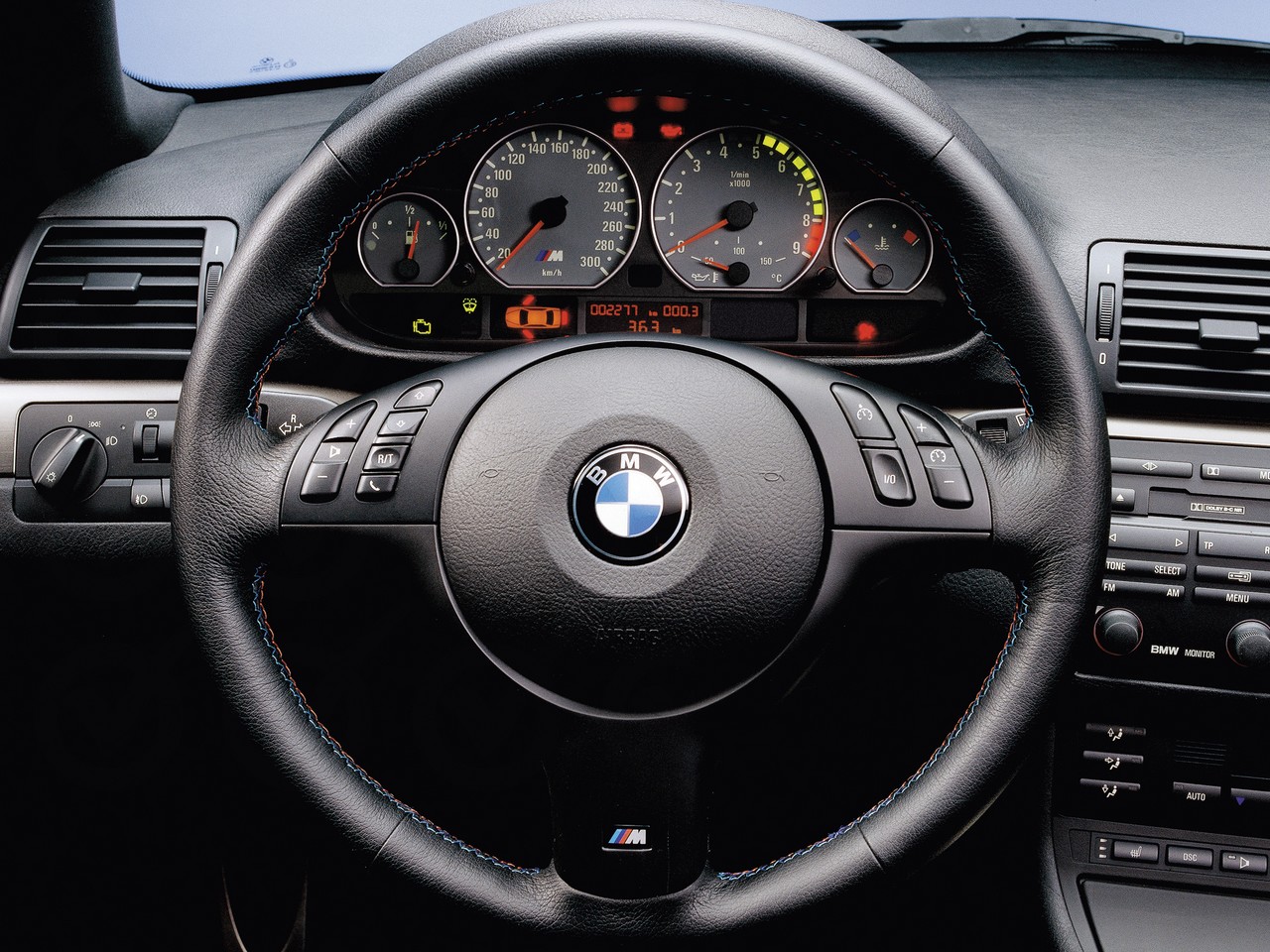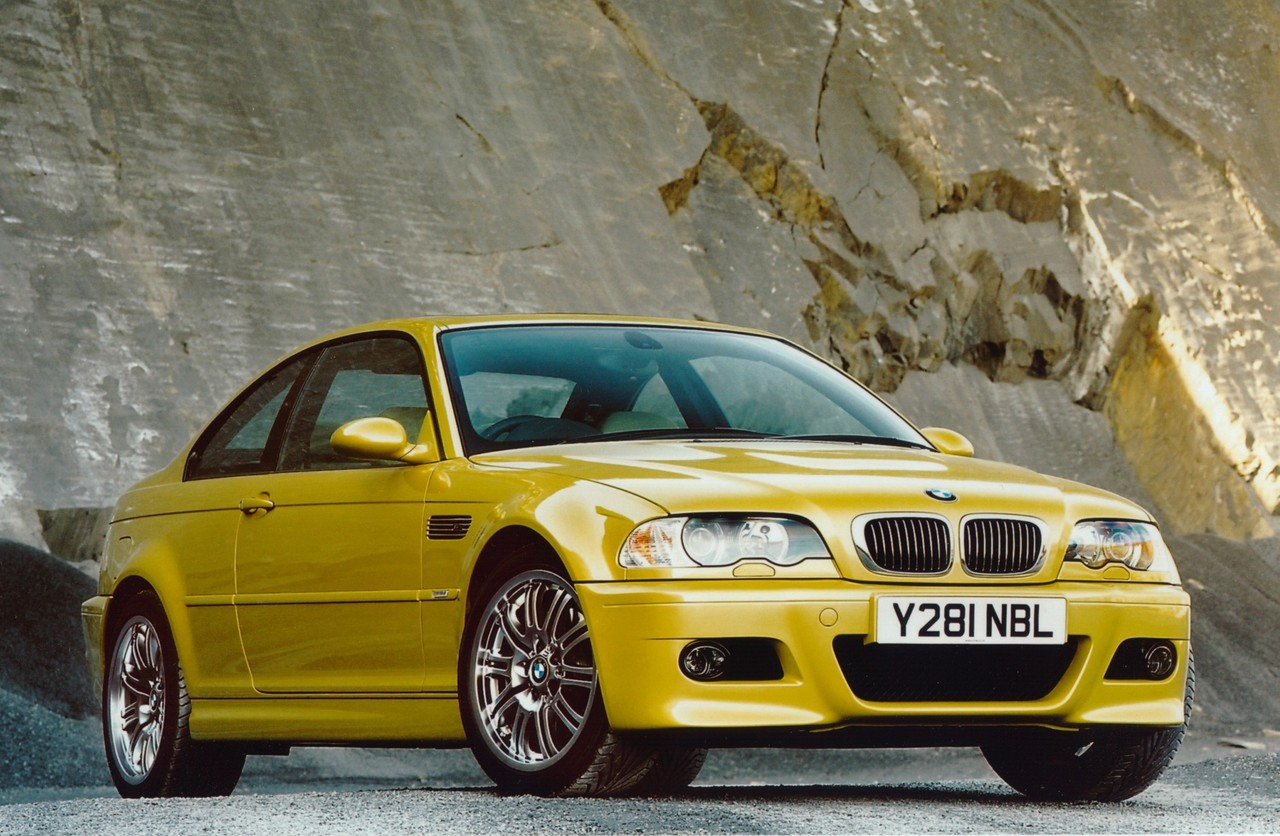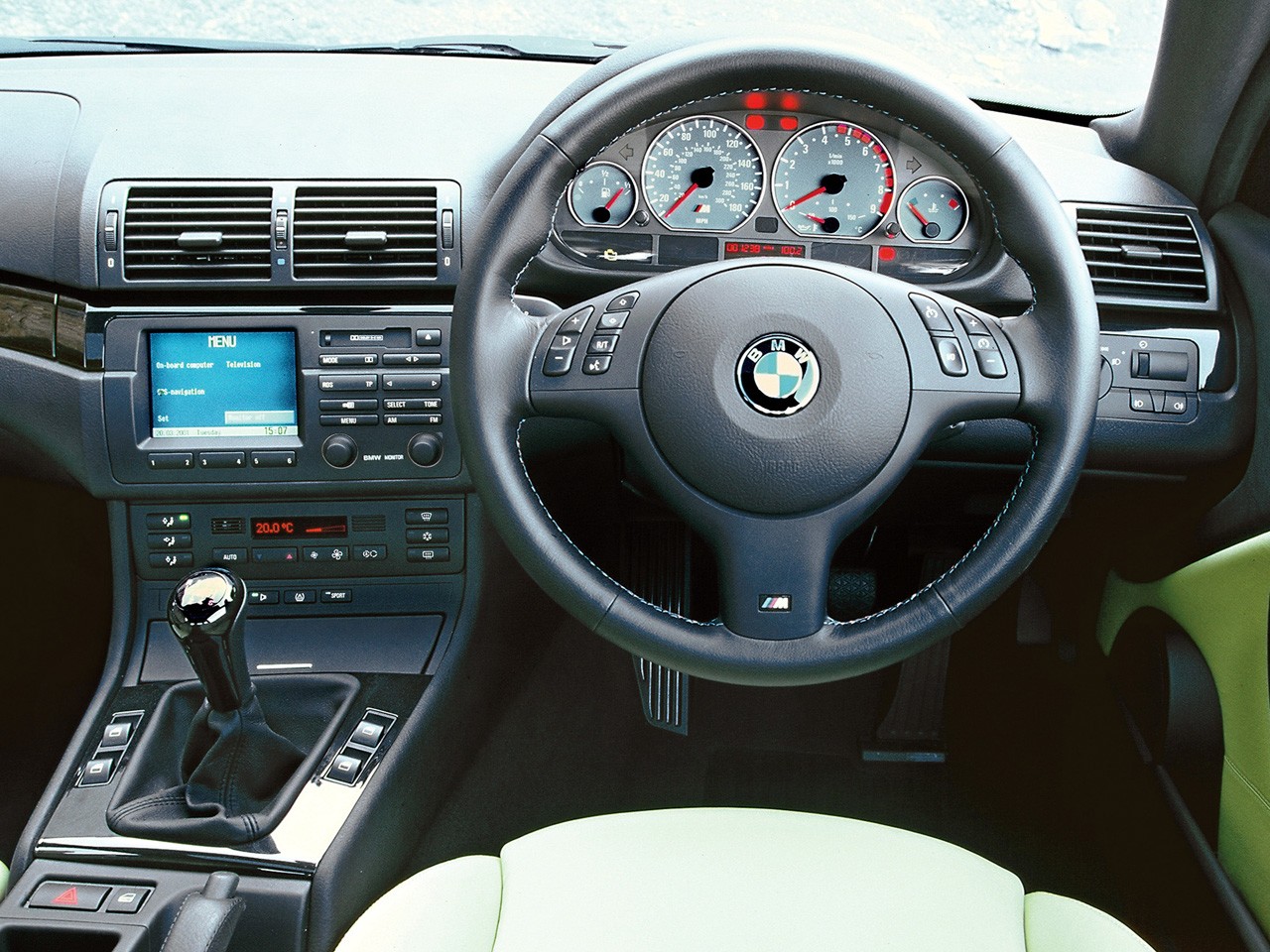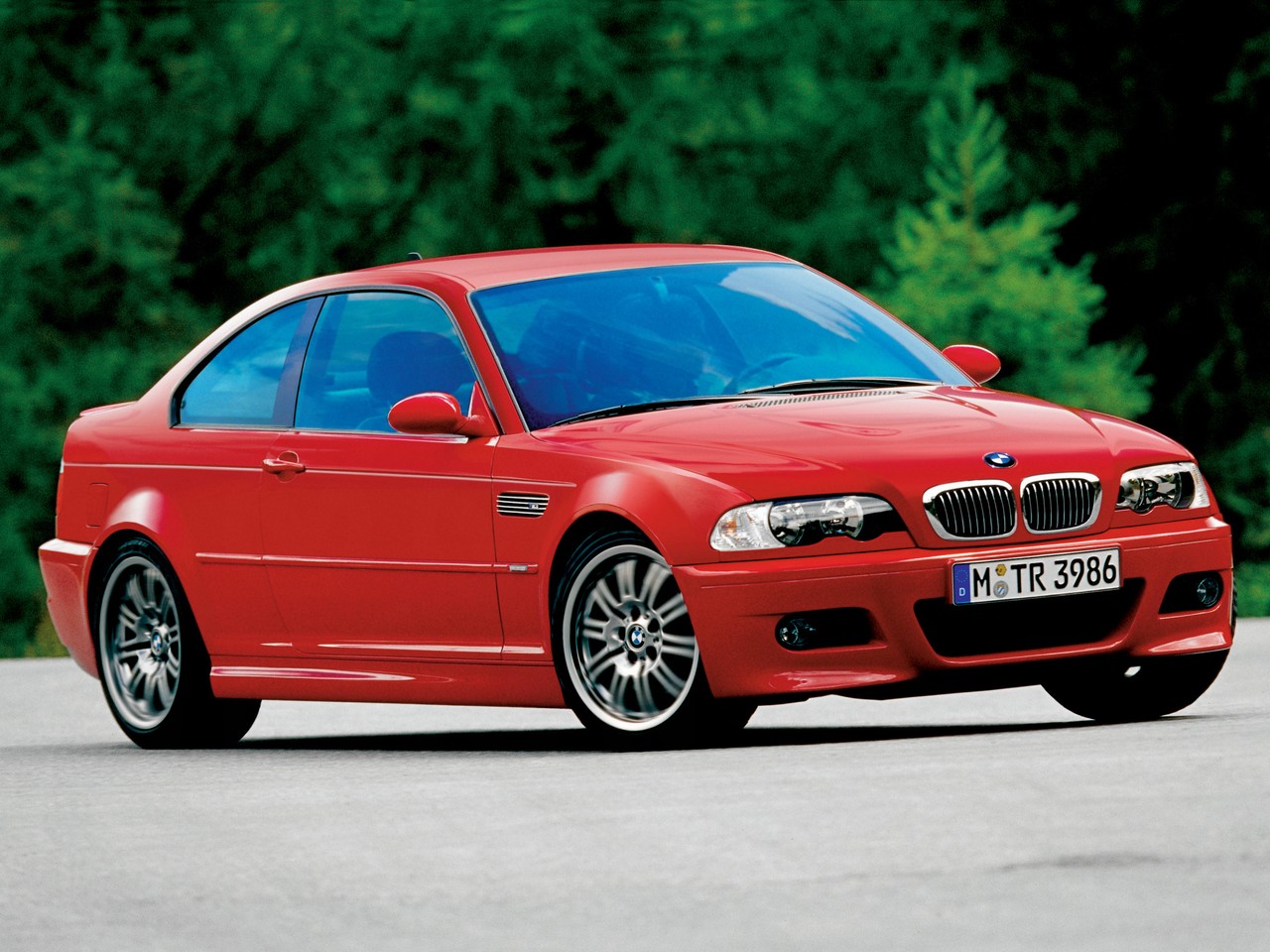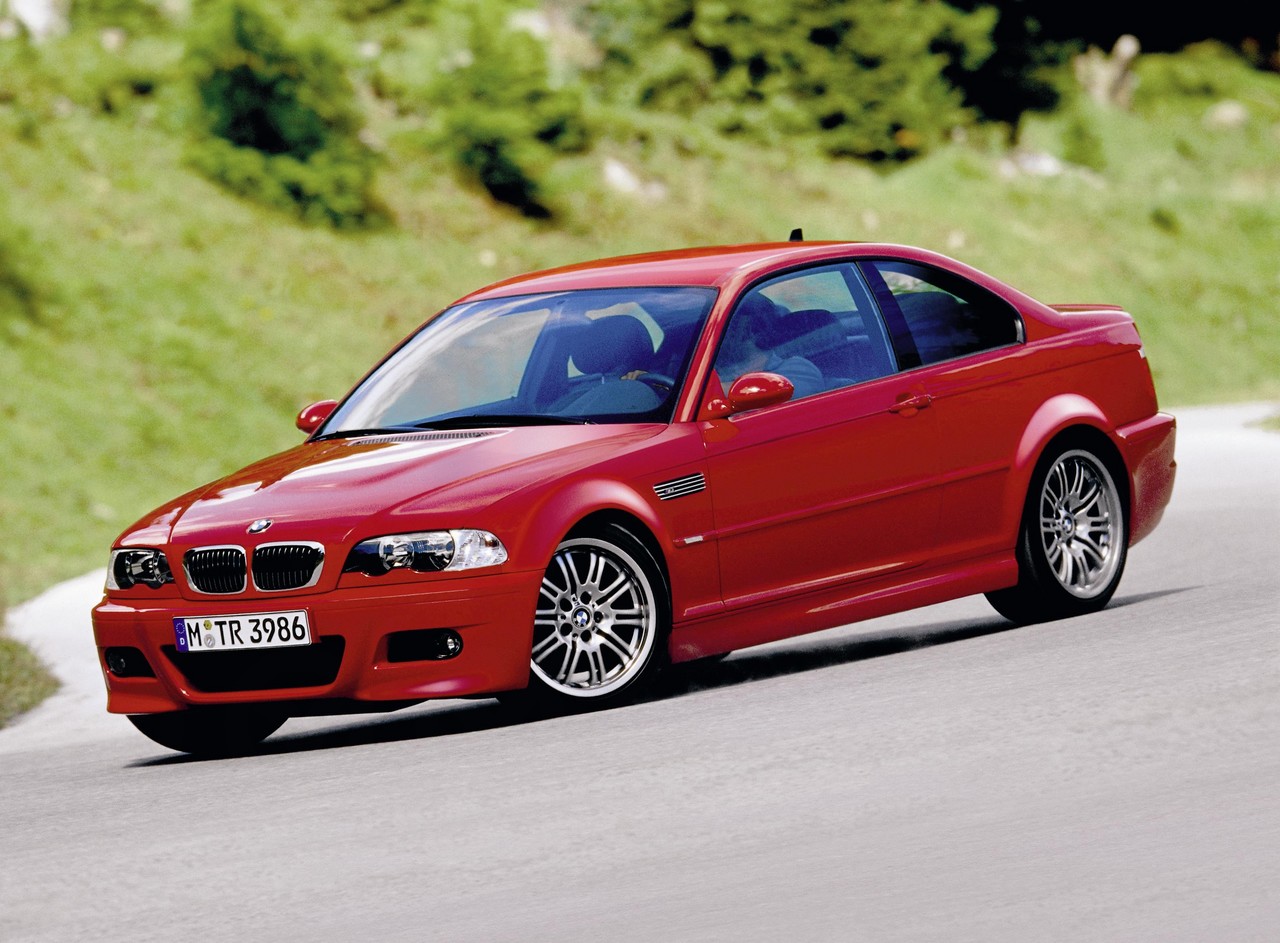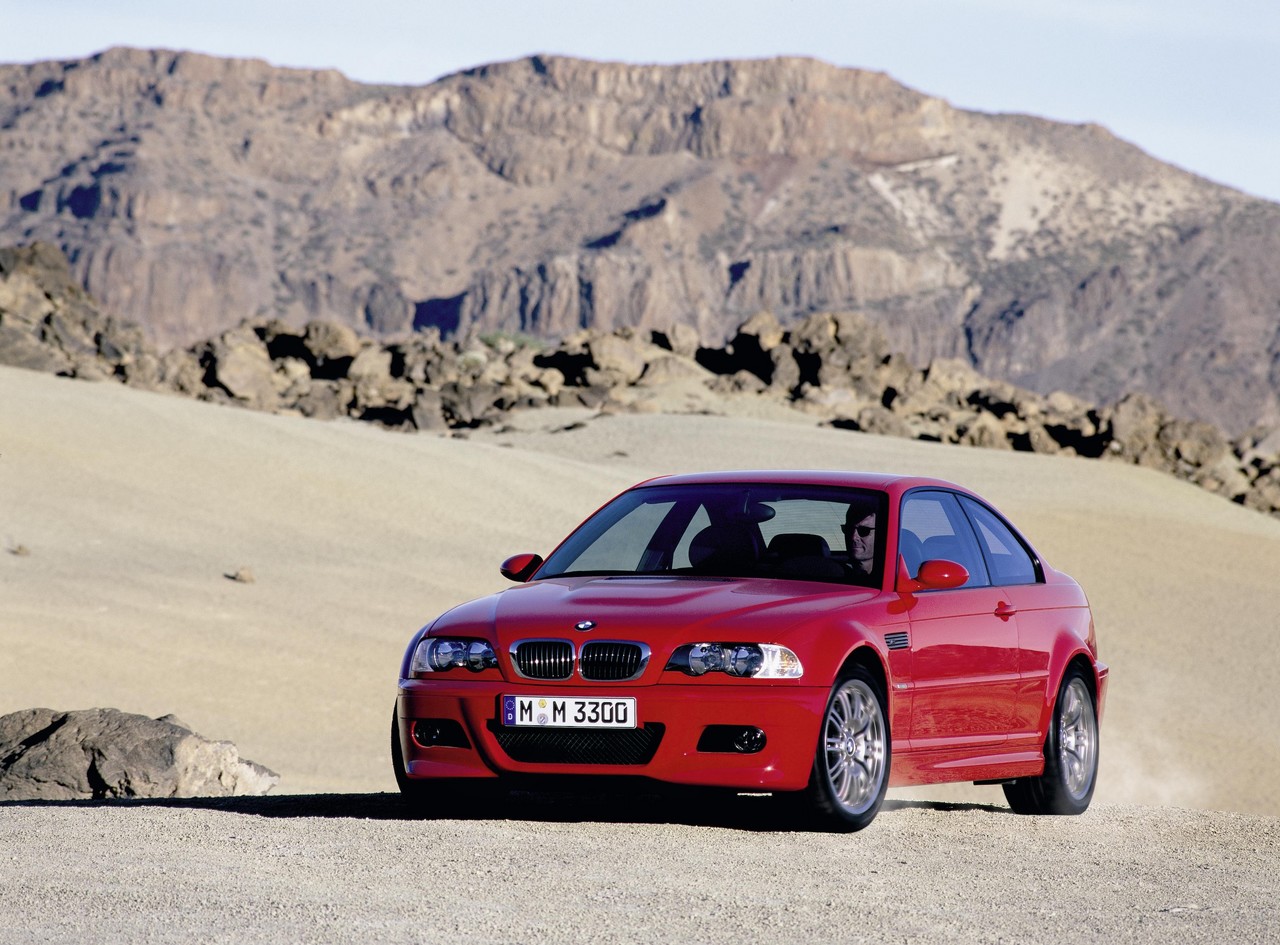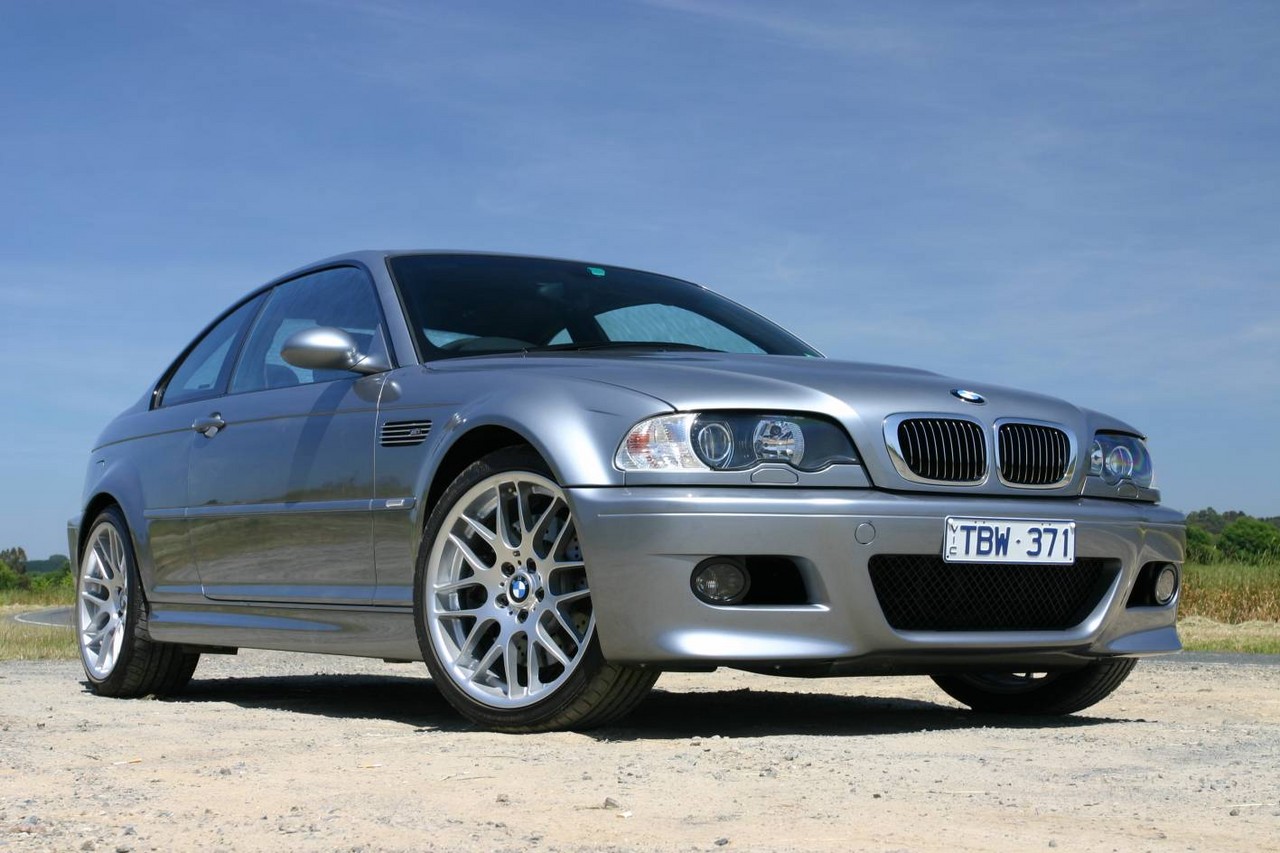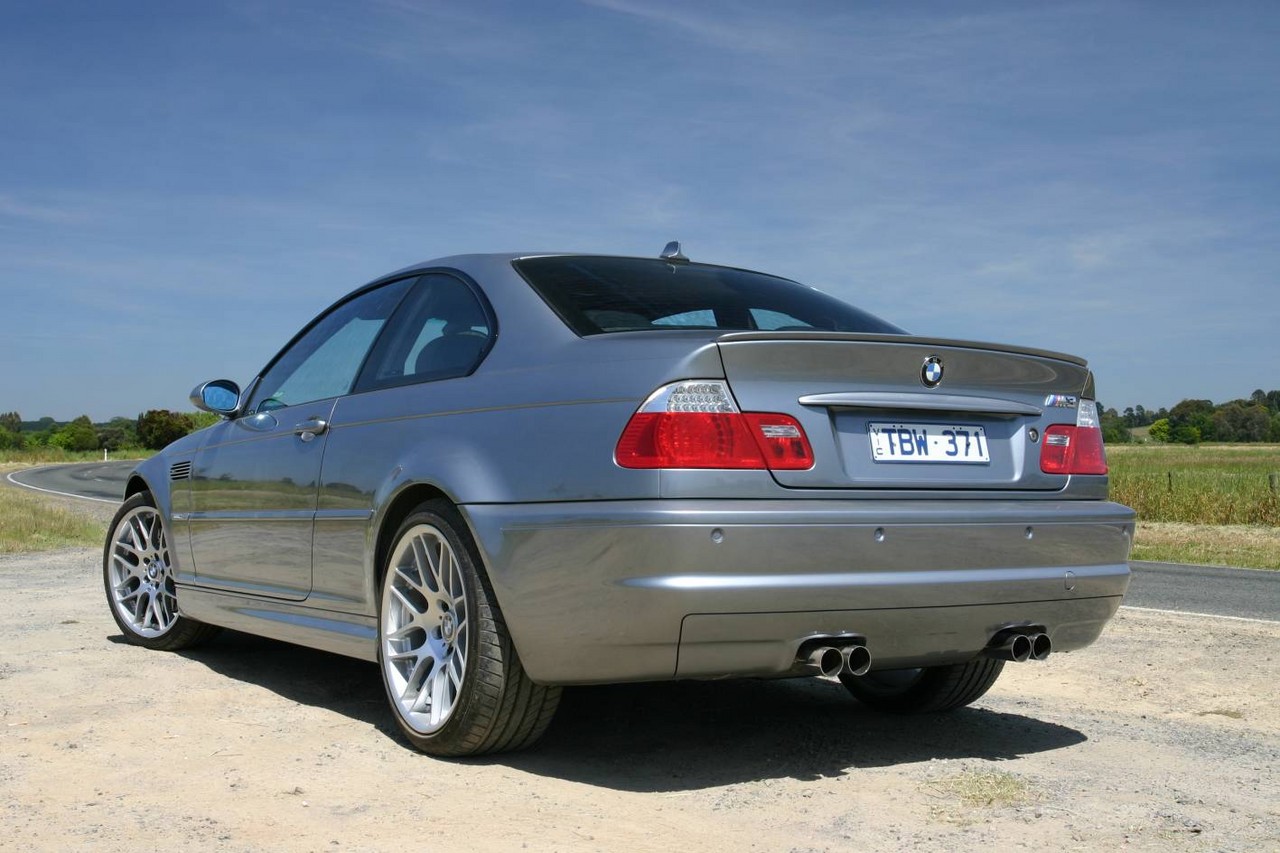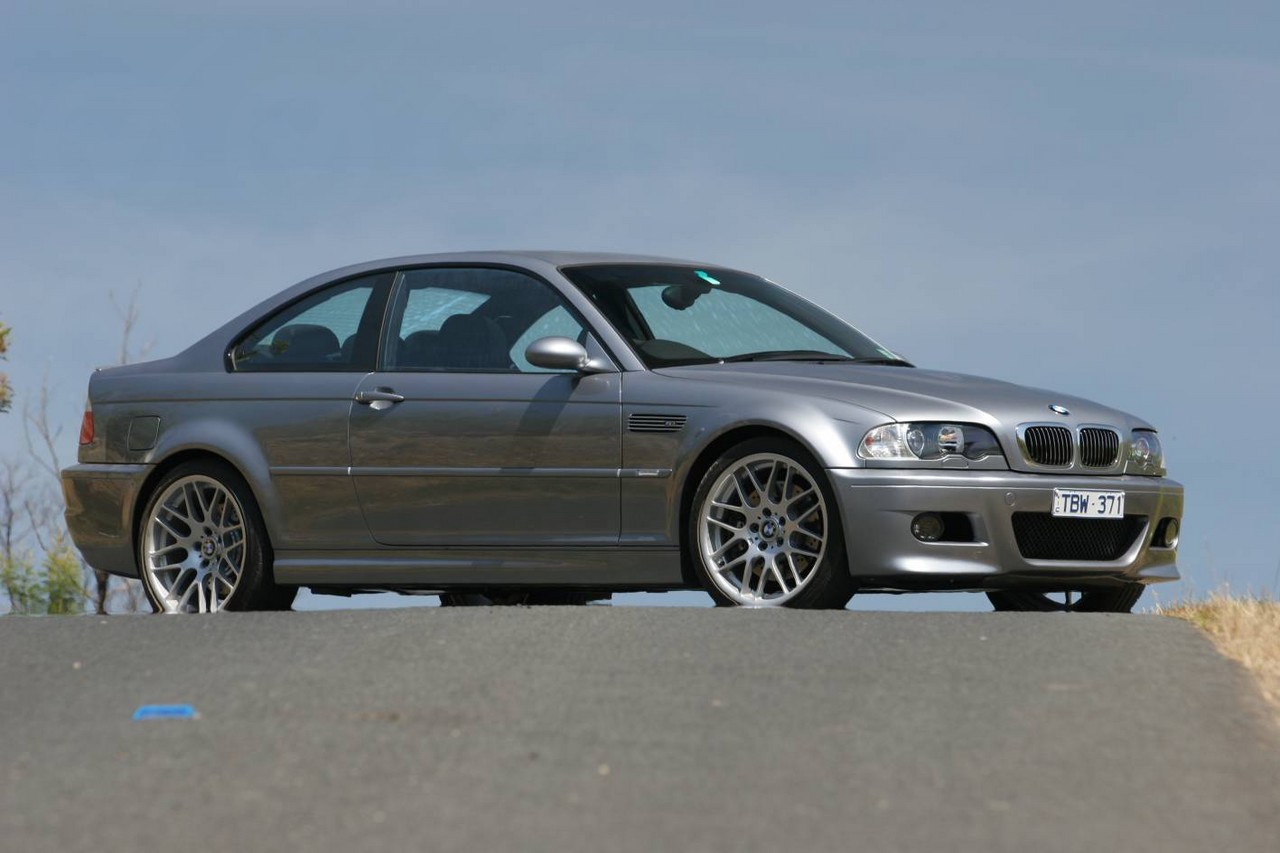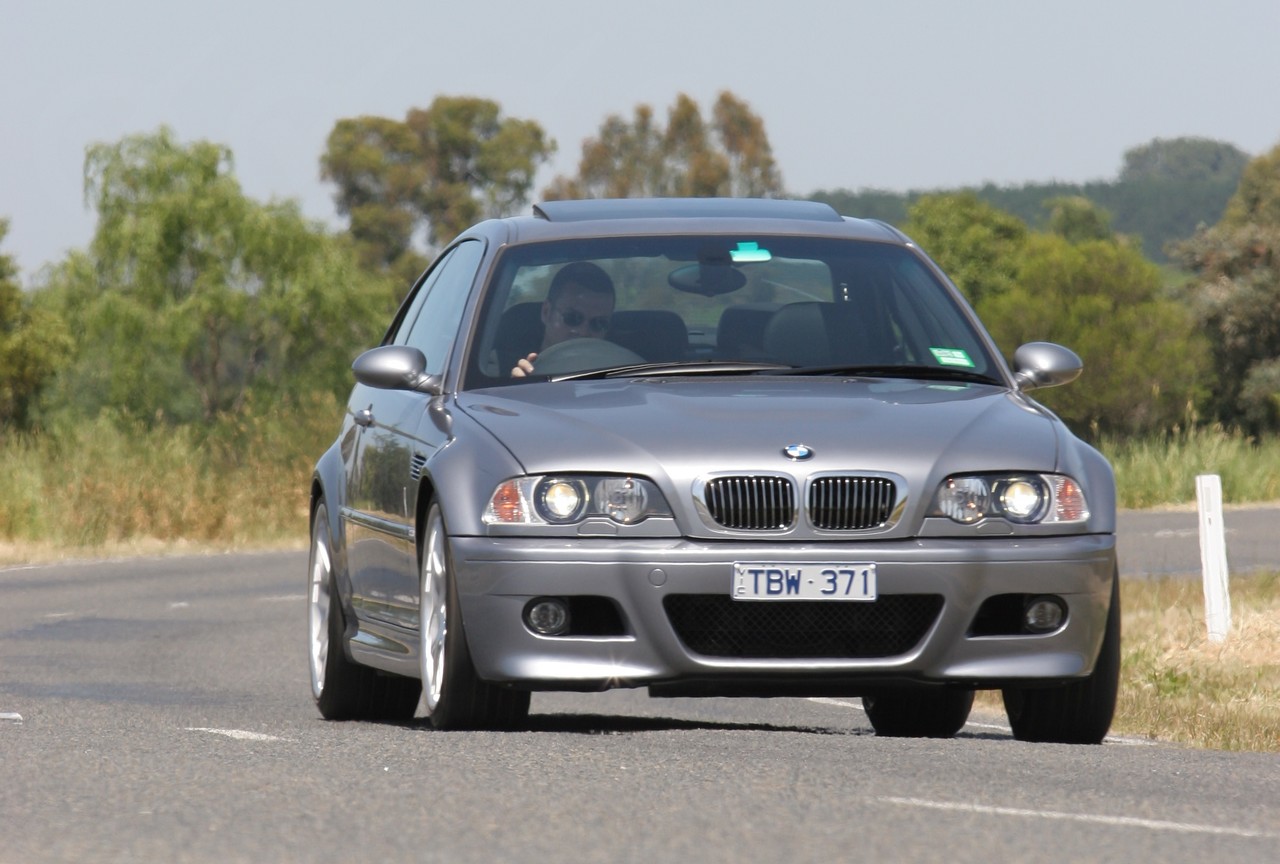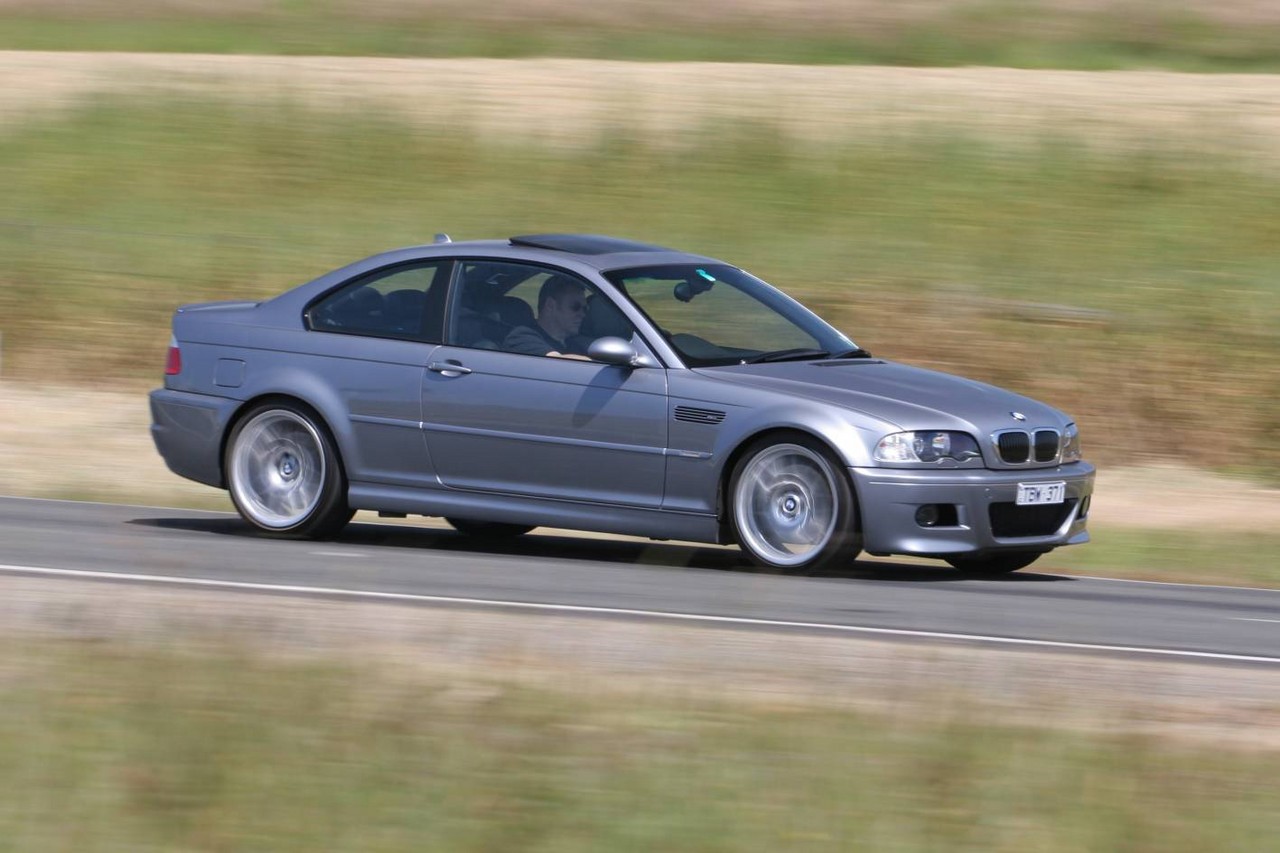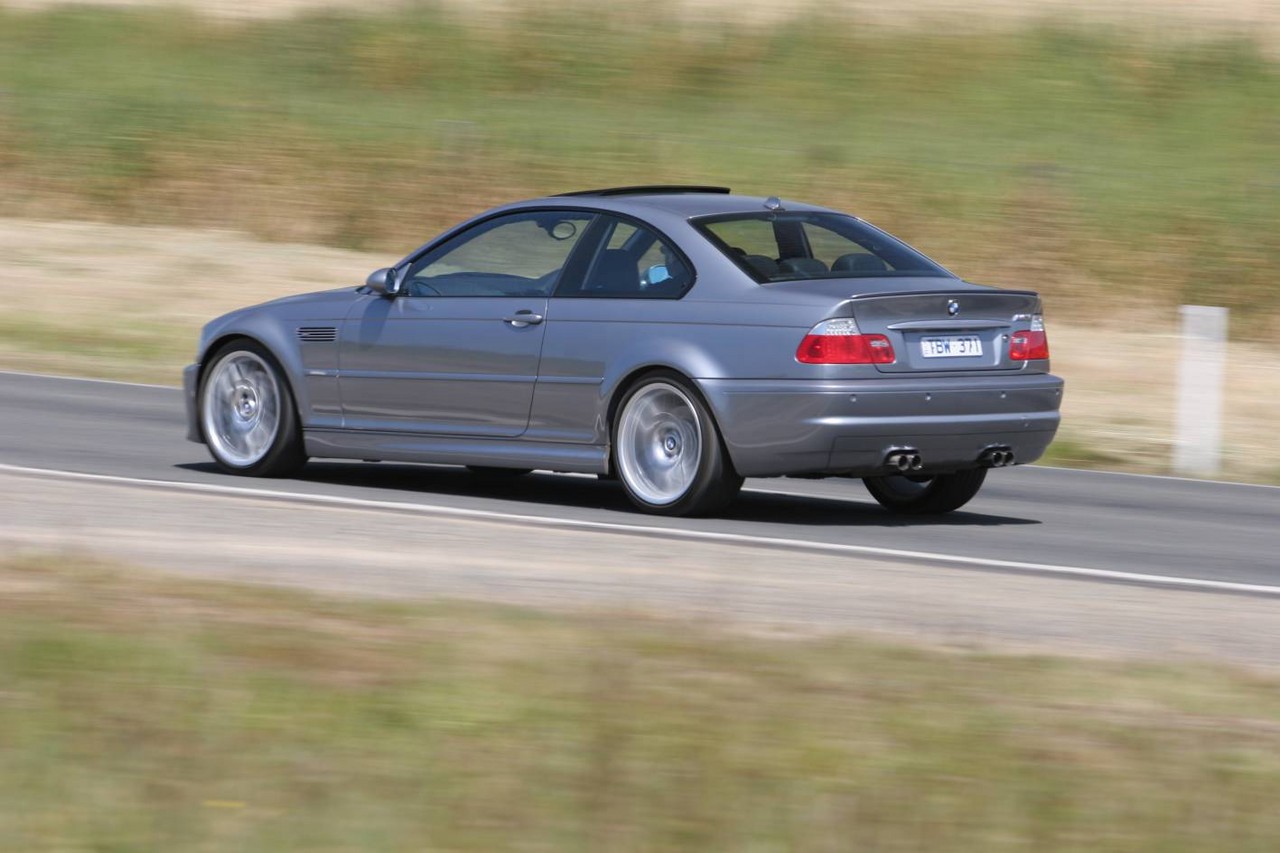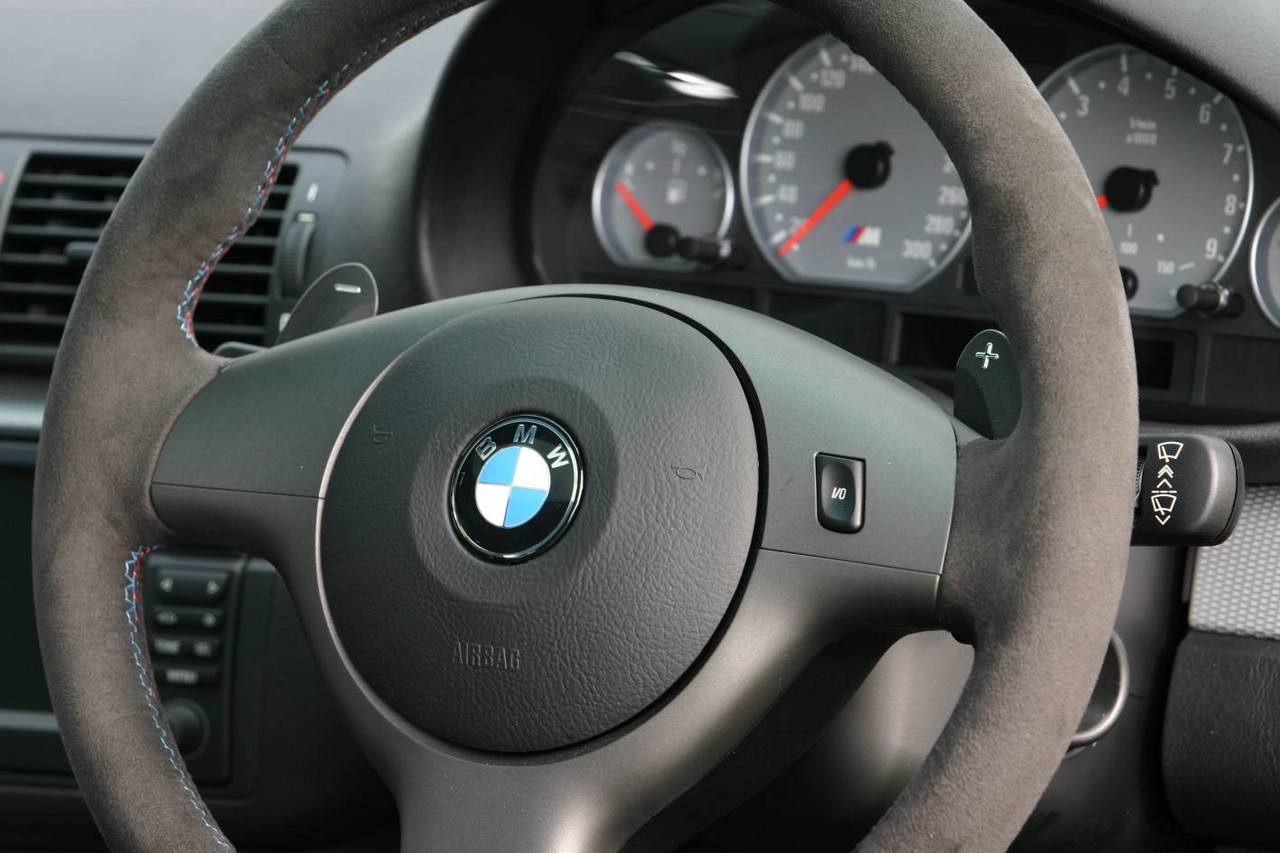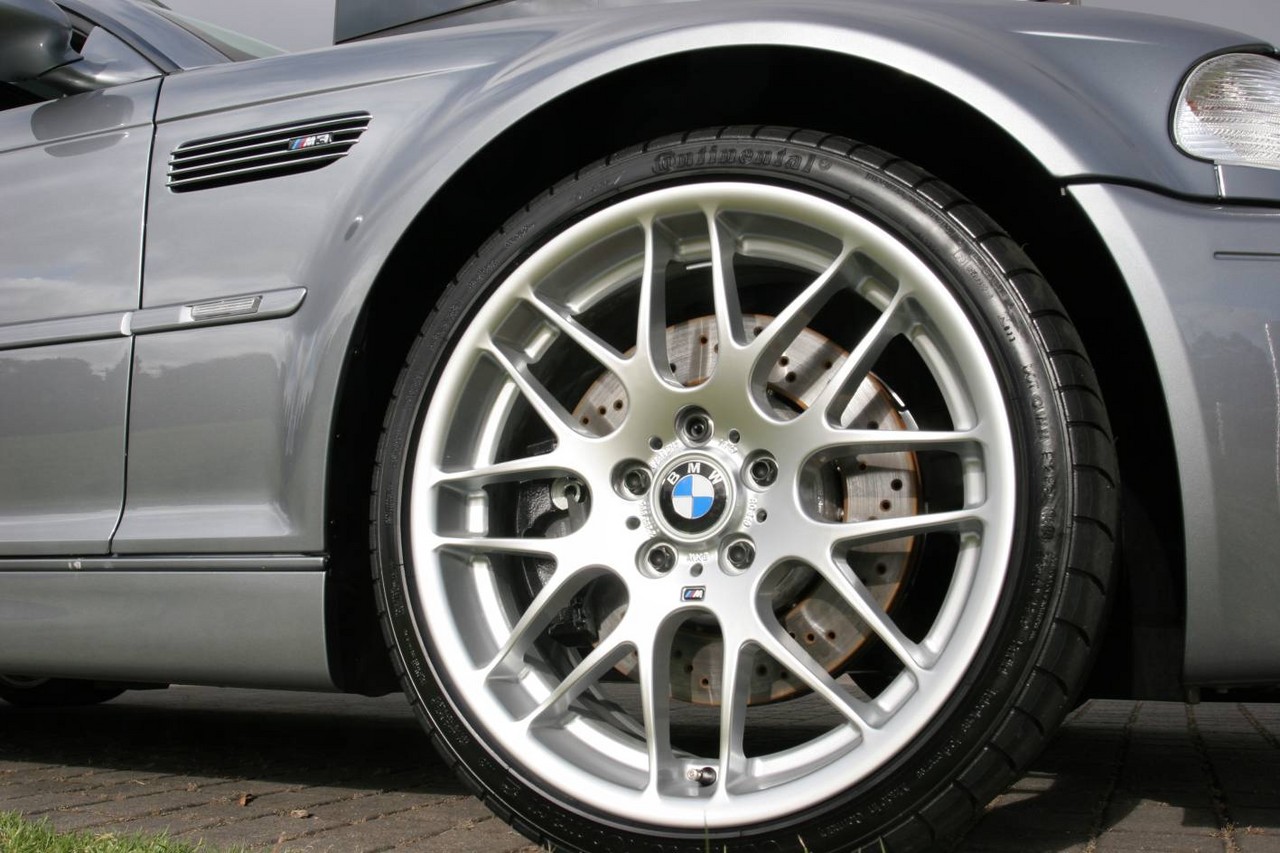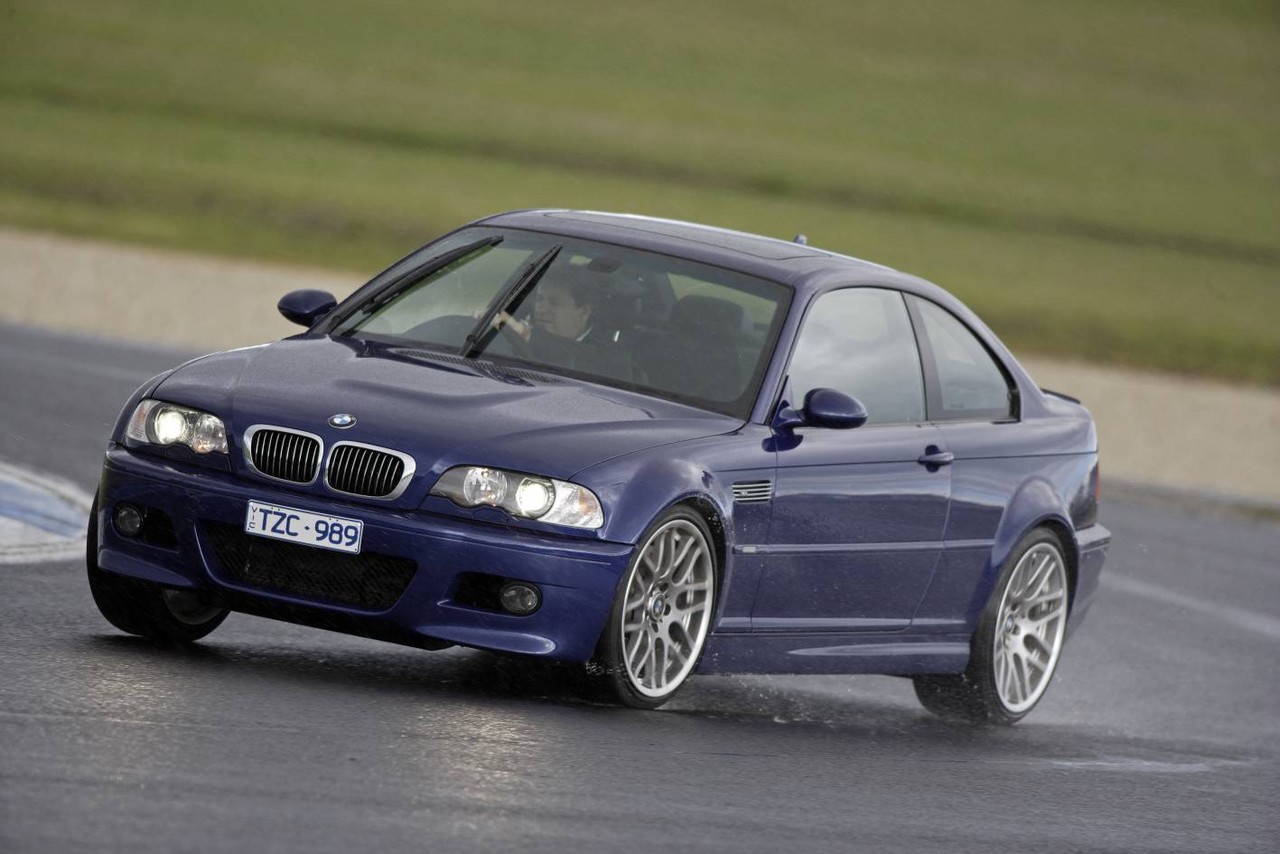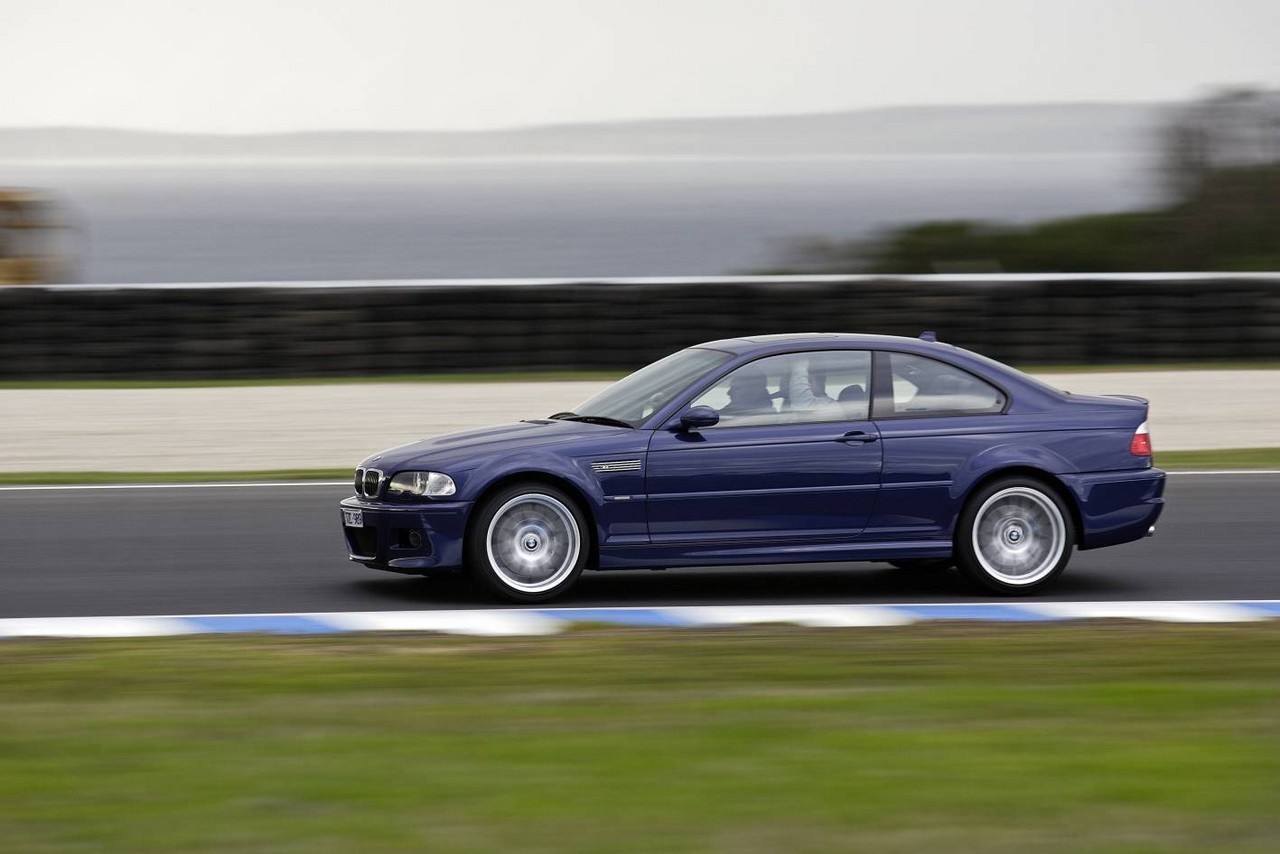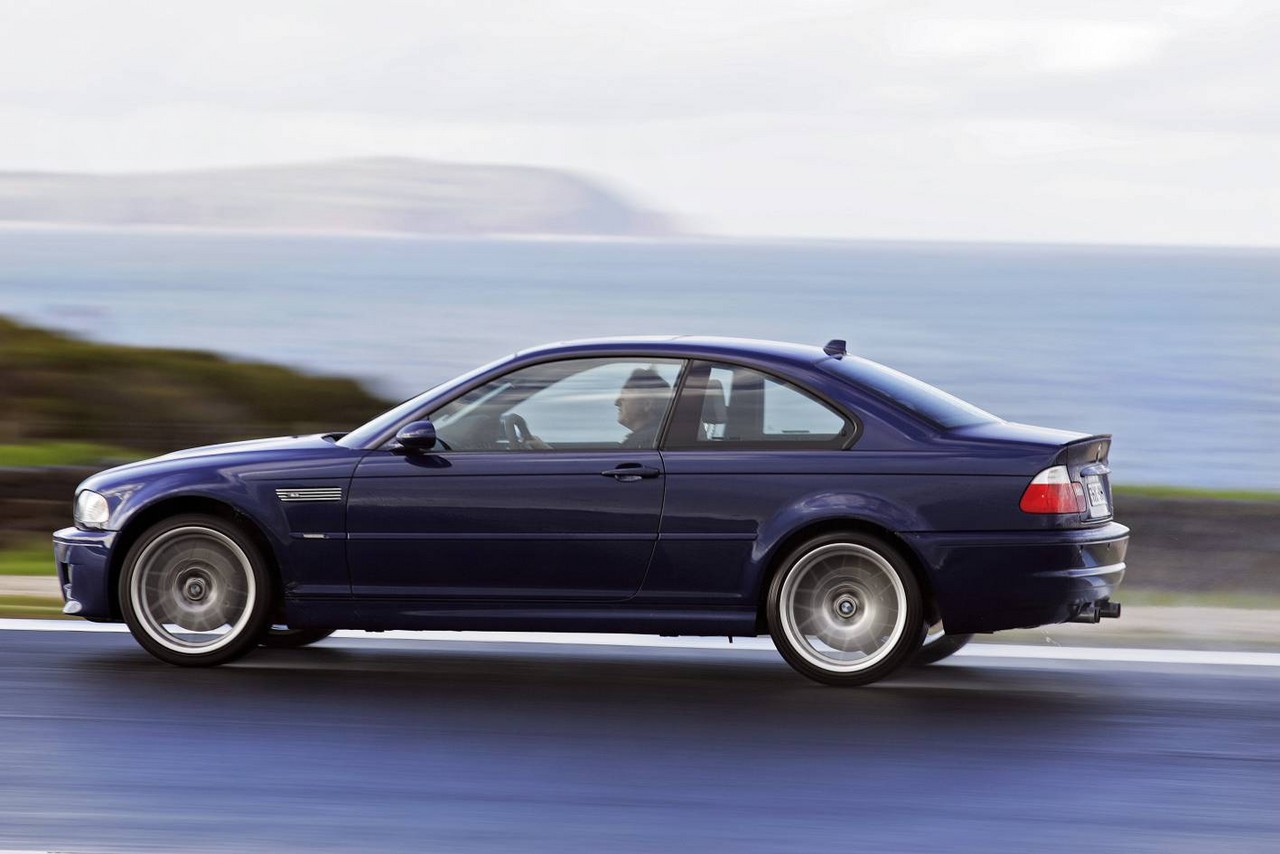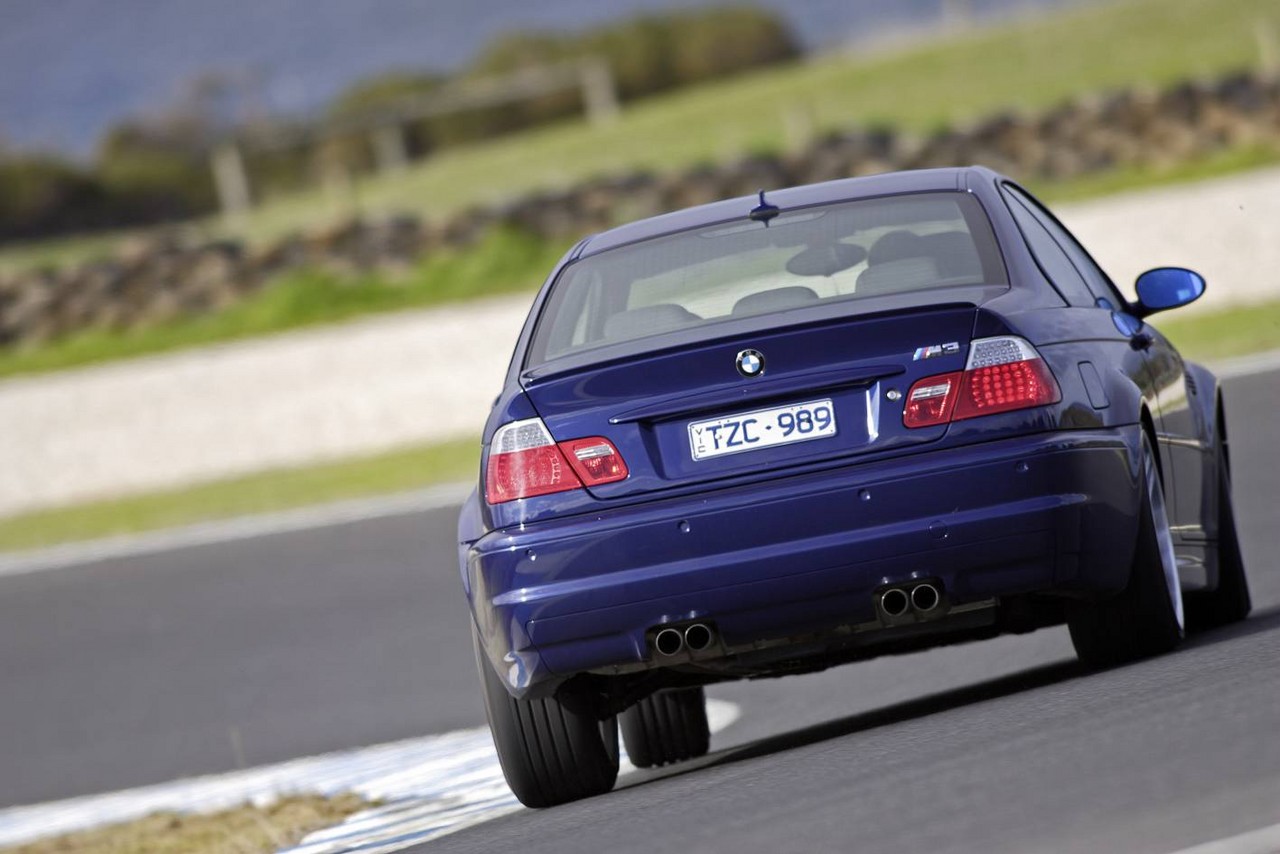
- Flexible six cylinder engine delivers throughout the rev range
- Excellent dynamics
- Accurate steering provides excellent feedback
- A joy to drive
- SMG provides jerky gearshifts
- S54 engine susceptible to connecting rod bearing wear and VANOS failure
Review: BMW E46.I M3 Coupe (2001-03)
Overview
Manufactured from February 2001 and officially released in Australia in May 2001, the BMW E46 M3 Coupe was manufactured in Regensburg, Germany. The rear-wheel drive E46 M3 was powered by BMW’s 3.2-litre S54B32 six cylinder petrol engine which was mated to either a six-speed manual or six-speed semi-automatic transmission (BMW’s Sequential Manual Gearbox, or ‘SMG’).
S54B32 engine
An evolution of the S50B32 engine , the 3246 cc S54B32 engine had a cast iron block, a forged steel crankshaft, a one-piece cast aluminium cylinder head, six individual throttle assemblies with electronic control, double overhead camshafts, variable intake and exhaust camshaft timing (BMW’s double VANOS), four valves per cylinder actuated by finger-type rocker arms, Siemens MSS 54 engine management, a compression ratio of 11.5:1 and a ‘scavening’ oil pump to maintain oil pressure when cornering.
The S54B32 engine had an 8000 rpm limit, though 80 per cent of peak torque was available from 2000 rpm. Furthermore, the E46 M3 Coupe could accelerate from rest to 100 km/h in 5.2 seconds and had an electronically-limited top speed of 250 km/h.
Manual and SMG transmissions
The six-speed Getrag ‘Type D’ manual transmission had the following ratios: 4.227 (1st), 2.528 (2nd), 1.669 (3rd), 1.226 (4th), 1.000 (5th) and 0.828 (6th), with a 3.620:1 final drive ratio.
Developed in collaboration with Getrag and Sachs, the newly-developed SMG II transmission (with BMW’s ‘Drivelogic’ electronic control software) had the same gearset and ratios as the manual transmission, but used an electrohydraulic system to provide automatic operation of the clutch and engagement of each gear for gearshifts in as little as 0.08 seconds. The SMG II transmission enabled the driver to select from eleven (11) shift programs, six for the ‘sequential’ (i.e. driver-operated) mode and five in ‘automated’ (computer-controlled) mode. Furthermore, a Launch Control optimised shift times for maximum acceleration.
Dimensions and body
Compared to its E36 M3 Coupe predecessor, the E46 M3 Coupe was 59 mm longer (at 4492 mm), 70 mm wider (1780 mm), 7 mm taller (1372 mm) and had a 21 mm longer wheelbase (2731 mm); its drag coefficient was 0.29 Cd. Furthermore, the E46 M3 Coupe had a 50:50 weight distribution and, with the manual transmission, kerb weight was 1525 kg.
Compared to the E46 3-Series Coupe , the E46 M3 Coupe could be identified by its wider front and rear quarter panels, front quarter panels with side grilles and indicators, aluminium bonnet with ‘power dome’, wide front kidney grille, more aggressive front fascia and rear valance, quad exhaust pipes and clear indicator lenses.
Suspension
The E46 M3 Coupe had a single-joint spring strut front axle and a central-arm rear axle with a longitudinal control arm and a double track control arm; to reduce unsprung mass, the upper track control arm was made of aluminium. Compared to the standard E46 3-Series Coupe , changes included:
- An 86 mm wider front and 46 mm wider rear track;
- More robust subframe from the E46 3-Series Converitble;
- Struts which separated the top mountings of the springs and shock absorbers;
- Unique ‘bat wing’ shaped forged aluminium lower control arms (rather than arc-shaped lower arms) with unique bearings, bushings and cushions;
- Modified rear suspension links with steel ball joints (rather than rubber bushings);
- Larger anti-roll bars (26 mm diameter front and 21.5 mm diameter rear);
- Unique rates for the coil spring and twin-tube gas-pressure shock absorbers;
- A thicker (3 mm) aluminium thrust plate;
- Larger half-shafts and wheel carriers; and,
- Modified wheel bearings.
From March 2002, an under-bonnet strut brace was fitted which spanned the front suspension towers.
Steering
The E46 M3 had rack-and-pinion steering with engine-speed-sensitive variable power assistance, with an overall steering ratio of 15.4:1 (compared to 15.5:1 for the standard E46 3-Series). For the M3, power assistance was reduced for greater feel and steering return action was enhanced by the increased castor.
| Engine | Trans. | Peak power | Peak torque | |
|---|---|---|---|---|
| M3 | 3.2-litre petrol I6 (S54 B32) | 6sp man., 6sp SMG |
252 kW at 7900 rpm | 365 Nm at 4900 rpm |
Safety equipment
Standard safety equipment for the E46 M3 Coupe included dual front airbags, front and rear door-mounted side airbags, BMW’s ‘ITS’ head-height airbags for front occupants, ABS, electronic brake force distribution, electronic stability control, cornering brake control, traction control and front seatbelts with pretensioners and load limiters.
For the E46 M3, the electronic stability control system (BMW’s ‘Dynamic Stability Control’, or DSC) was developed by Teves and could be switched off via a dash-mounted switch.
Brakes
The E46 M3 Coupe had 325 mm by 28 mm front brake discs with two-piece, cross-drilled discs and 327 mm by 20 mm vented rear discs. The M3 Coupe could decelerate from 100 km/h to rest in 35 metres.
Features: M3 Coupe
Standard features for the M3 Coupe included 18-inch M Double Spoke II cast-alloy wheels with a Satin Chrome finish, 18 x 8.0J front wheels with 225/45 ZR18 tyres and 18 x 9.0J rear wheels with 255/40 ZR18 tyres, a Hi Fi sound system with ten speakers and a six-disc CD changer, power adjustable ‘M’ front sports seats with combination Alcantara/Nappa leather trim, cruise control, xenon headlights with washers, front fog lights, rear parking sensors, rain-sensing wipers, an ‘M’ leather sports steering wheel, remote central locking, power windows, power mirrors, Anthracite head liner, sill plates with ‘M3’ logo, on-board monitor with TV, an alarm and immobiliser.
From September 2001, the Australian-delivered M3 Coupe was fitted with bi-xenon headlights.
Variable M Differential Lock
The Variable M Differential Lock consisted of a shear pump and multi-disc clutch. Any difference in the rotational speed of the rear wheels would drive a shear pump which, in turn, increased pressure in the viscous silicon fluid that would cause the multi-disc clutch to engage and transfer torque to the rear wheel with greater traction. The greater the speed difference between the two wheels, the faster the clutch would engage.
Related links
Review: BMW E46.II M3 Coupe (2003-06)
Overview
Released in Australia in May 2003, the E46 Mk.II (E46.II) M3 Coupe could be identified by its LED tail-lights. Inside, the climate control panel was revised.
In December 2004, the suspension of the M3 Coupe was revised to reduce understeer.
| Engine | Years | Trans. | Peak power | Peak torque | |
|---|---|---|---|---|---|
| M3 | 3.2-litre petrol I6 (S54 B32) | 2003-06 | 6sp man., 6sp SMG |
252 kW at 7900 rpm | 365 Nm at 4900 rpm |
| M3 CSL | 3.2-litre petrol I6 (S54 B32) | 2003-04 | 6sp SMG | 265 kW at 7900 rpm | 370 Nm at 4900 rpm |
Features
Standard features for the E46.II M3 Coupe were initially unchanged. From May 2004, however, the M3 was equipped with BMW’s ‘Professional’ satellite navigation system (previously available as an extra-cost option).
M3 CSL
The E46 M3 CSL (for Coupe, Sport and Lightweight) was released in Australia in November 2003. Limited to 20 local deliveries, the E46 M3 CSL benefited from the extensive use of lightweight components, engine revisions, suspension changes and a minimalist interior.
The M3 CSL was available in two paint finishes: Silver Grey Metallic and Black Sapphire Metallic.
M3 CSL Engine
For the S54B32 engine, changes for the M3 CSL included:
- An improved air intake system which used CFRP and was routed from the front airdam to larger manifolds;
- Slightly straightened intake and exhaust manifolds;
- A lightweight exhaust manifold (subsequently introduced for other M3 vehicles);
- Thinner exhaust piping;
- Modified camshaft and valve timing; and,
- Retuned engine management system using a MAP sensor (rather than a MAF sensor).
As a result, the M3 CSL could accelerate from rest to 100 km/h in 4.9 seconds and to 200 km/h in 16.8 seconds. Its top speed, however, was limited to 250 km/h.
M3 CSL Lightweighting
Mass reduction measures for the M3 CSL included:
- A carbon fibre-reinforced plastic (CFRP) roof, CFRP front bumper support, CFRP front airdam and CFRP lower rear valance panel;
- A sheet moulding compound (SMC) boot lid;
- Fibre glass reinforced plastic (FGRP) rear bumper supports, and FGRP ‘sandwiched’ with thermoplastic and foam to create the boot floor and rear bulkhead;
- Thinner rear window glass; and,
- Lightweight 19-inch cross-spoke alloy wheels: 19 x 8.5J front and 19 x 9.0J rear wheels with 235/35 ZR19 front tyres and 265/30 ZR19 rear tyres Michelin Pilot Sport Cup tyres.
M3 CSL Interior
Inside, changes for the M3 CSL included:
- Glass-fibre-plastic bucket seats – with manual adjustment – finished in a combination of Anthracite ‘Reflex’ cloth and Amaretta (suede);
- Minimal door panels made from CFRP;
- Omission of the front side airbags;
- Omission of the sunroof, on-board monitor and Hi-Fi sound system;
- Centre console surrounding the parking brake made of CFRP; and,
- Alcantara-wrapped ‘M’ three spoke steering wheel and parking brake handle.
These changes contributed to an approximate 100 kg mass reduction relative to the standard M3 Coupe, for an unladen weight of 1385 kg (EU).
Other: suspension, brakes and DSC
For the M3 CSL, suspension changes included:
- Front coil springs that were shorter by one winding;
- Different spring and shock absorber rates (for rebound and compression);
- Thicker anti-roll bars (30.8 mm diameter for the front bars and 22.5 mm for the rear);
- Stiffer ball bushings for the front suspension; and,
- A faster steering ratio (overall ratio of 14.5:1).
Finally, the M3 CSL had upgraded front brakes which consisted of 345 mm by 28 mm cross-drilled and vented front brake discs, while the electronic stability control system had an ‘M Track Mode’ which raised the yaw and wheelspin thresholds at which it intervened.
Related links
